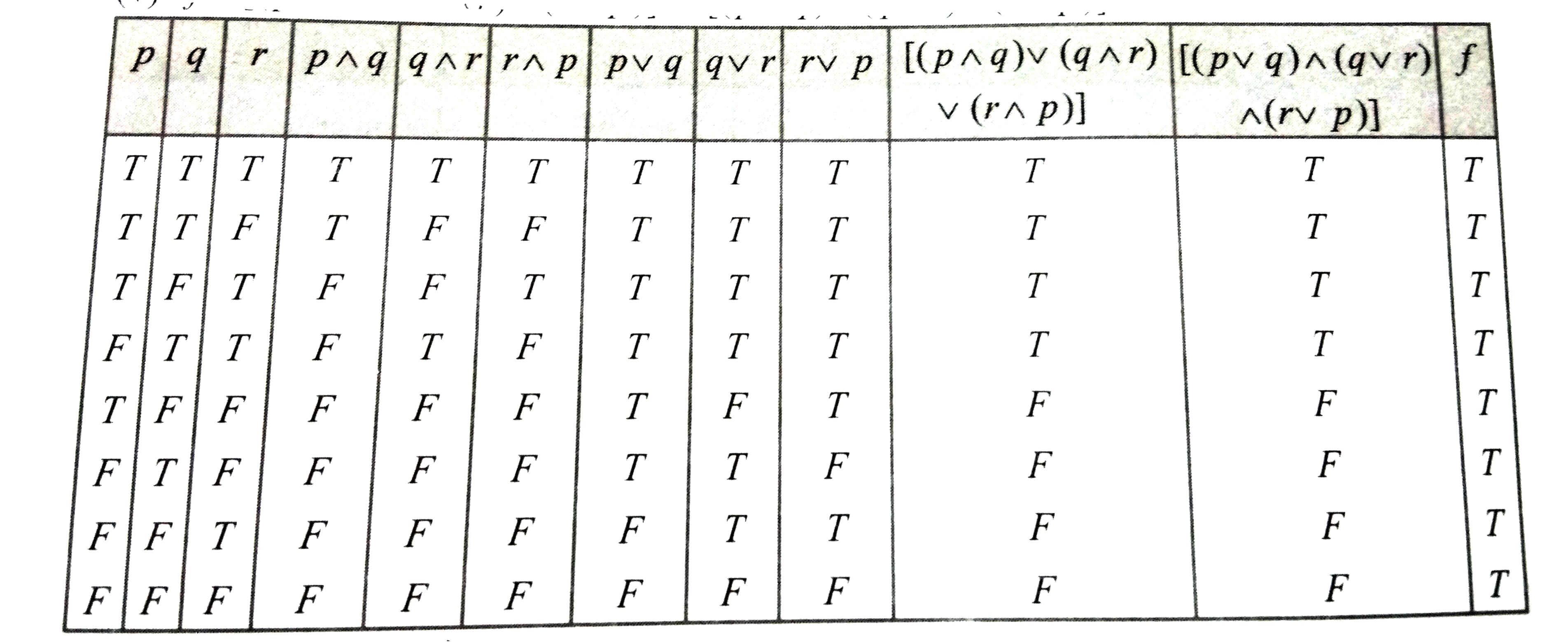सिद्ध कीजिये कि नीचे दिए गए सभी कथन पुनरुक्ति है
[(p∧q)∨(q∧r)∨(r∧p)]⇒[(p∨q)∨(q∨r)⇒(p⇒r)
[(p∧q)∨(q∧r)∨(r∧p)]⇒[(p∨q)∨(q∨r)⇒(p⇒r)
स्पष्टता f एक पुनरुक्ति है

Topper's Solved these Questions
- गणितीय विवेचन BOOK - BALAJI PUBLICATIONCHAPTER - गणितीय विवेचन EXERCISE - विविध उदाहरण
23 Videos
- गणितीय विवेचन BOOK - BALAJI PUBLICATIONCHAPTER - गणितीय विवेचन EXERCISE - अभ्यास प्रश्न 22.1
20 Videos
- गणितीय आगमन का सिद्धांत BOOK - BALAJI PUBLICATIONCHAPTER - गणितीय आगमन का सिद्धांत EXERCISE - विवेचनात्मक सोच वाले प्रश्न
2 Videos
- ज्या तथा कोज्या सूत्र BOOK - BALAJI PUBLICATIONCHAPTER - ज्या तथा कोज्या सूत्र EXERCISE - स्वमूल्यांकन परीक्षण (Self Assessment Test) विवेचनात्मक सोच वाले प्रश्न (Critical Thinking Problems)
9 Videos
Similar Questions
क्या निम्नलिखित वाक्य कथन है अपने उत्तर को कारण सहित लिखिए
8,6 से छोटा है
View Solutionनिम्न वाक्यों में कौन-कौन से वाक्य कथन है
वह एक डॉक्टर है
View Solutionसिद्ध कीजिये की a+ar+ar2+...+aran−1=a(rn−1)r−1,r>1
View SolutioncosAa+cosBb+cosCc=a2+b2+c22abc
View SolutionThe statement which is not a tautology is (p↔q)[(p→q)∧(q→q)] b. (p→q)∨(~p→q) c. (p∧q)−−−→p∨q d. (p∧q)∨[(p∨q)→˜q]
View SolutionIf the statements p and q are true and the statement r and s are false, find the truth values of :
(1) ~[(p∨q)∧~r]∧{[(~p∨q)∨(~r)]∨s}
(2) p∧[q∧(~p∧r)∨~s]∨~r.
View SolutionSTATEMENT-1 : [p∧(p∨q)]∨[q∧(q∨p)]=p∨q
and
STATEMENT-2 : p∧(q∨r)=(p∧q)∨(p∧r)
View SolutionNegation of (~p∧~q)∨(~p∨r) is
View Solution(p⇒q)→[(r∨p)⇒(r∨q)] is
View Solution(p⇒q)→[(r∨p)⇒(r∨q)] is
View SolutionProve that the statements [(~p)∨q]∧[p∨(~r)]∧[(~p)∨(~q)] and ~(p∨r) are logicaly equivalent.
View Solution~(p→q)→[(~p)∨(~q)] is
View SolutionThe contrapositive of (p∨q)→r is
View SolutionObserve the following statements
I : The dual of [~p∧q)]∨[p∧{~(q∨~s)}] is [~(p∨q)]∧[p∨{~(q∧~s)}]
II : The dual of ~p∧[(~q)∧(p∨q)∧~r] is ~p∨[~q)∨(p∧q)∨~r]
The true statements in the above is/are :
View SolutionNegation of (~p∧~q)∨(~p∨r) is
View Solution
